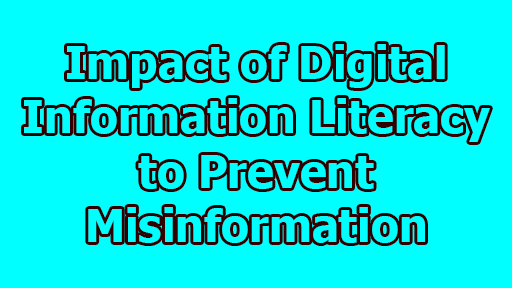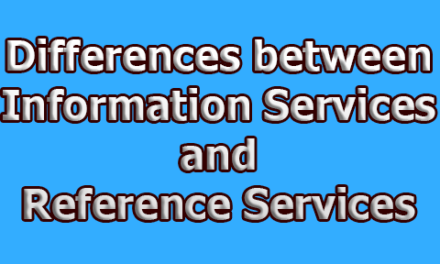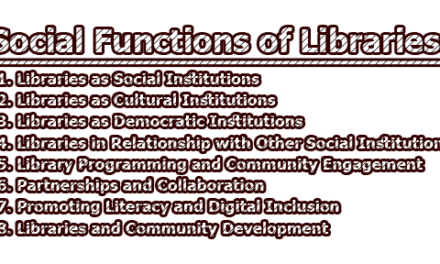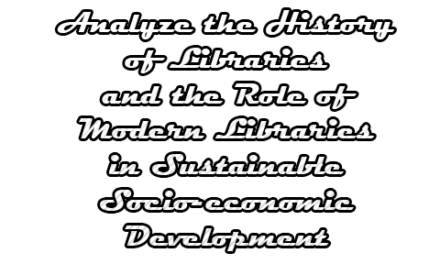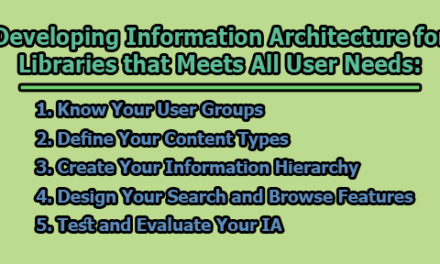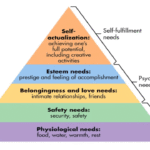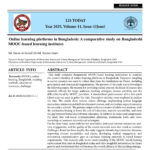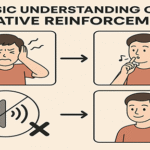Impact of Digital Information Literacy to Prevent Misinformation:
In an age characterized by the rapid digitization of information and the pervasive influence of digital platforms, the critical importance of digital information literacy has emerged as a bulwark against the insidious spread of misinformation (Tewksbury & Rittenberg, 2012). As society becomes increasingly reliant on digital sources for news, information, and communication, the boundaries between accurate content and deceptive narratives blur, making it imperative for individuals to cultivate the skills necessary to navigate this complex digital landscape. Digital information literacy, a multifaceted set of competencies encompassing critical thinking, media analysis, source evaluation, and ethical online behavior, plays a pivotal role in equipping individuals with the tools needed to discern truth from falsehood (Fraillon et al., 2014). In this era of information overload and rapid sharing, the ability to prevent misinformation from permeating public discourse has become a societal imperative, and digital information literacy stands as a beacon guiding us through the fog of uncertainty toward a more informed and resilient future. In the rest of this article, we will explore the impact of digital information literacy to prevent misinformation.
The Digital Landscape: Opportunity and Challenge:
The internet, once hailed as an unprecedented repository of knowledge and connectivity, has evolved into a double-edged sword (Lewandowsky et al., 2012). While it enables rapid access to a wealth of information, it also serves as an incubator for the proliferation of misinformation, misinformation that can infiltrate minds, sway opinions, and potentially influence critical decisions (Pennycook & Rand, 2018). With the rise of social media, user-generated content, and algorithm-driven recommendations, the spread of misleading or inaccurate information has become alarmingly efficient, often outpacing the dissemination of verified facts (Vosoughi et al., 2018). As a result, the ability to discern the authenticity and reliability of digital information has become indispensable, and this is precisely where digital information literacy emerges as a formidable defense mechanism.
Empowering Critical Thinking:
At the heart of digital information literacy lies the cultivation of critical thinking (VanSickle & Hogg, 2020). This skill encourages individuals to approach online information with a discerning eye. In an age where news stories can go viral within moments, the ability to question, analyze, and verify information becomes paramount. Proficiency in digital information literacy equips individuals to recognize common hallmarks of misinformation, such as sensationalism, vague sourcing, and emotional manipulation. By fostering critical thinking skills, digital information literacy empowers individuals to resist the allure of sensational but inaccurate narratives, thus preventing the rapid spread of misinformation (Pennycook et al., 2020).
Navigating the Web of Sources:
The vast expanse of the digital realm presents a challenge in determining the credibility of information sources (Trust & Davenport, 2015). Digital information literacy provides individuals with the tools to distinguish reliable sources from dubious ones. Whether evaluating news articles, social media posts, or websites, digital literacy prompts individuals to scrutinize authors’ qualifications, assess publication credibility, and consider potential biases. Through this discernment, individuals are better equipped to verify the accuracy of information before accepting it as truth, thereby thwarting the propagation of false or misleading content (Lewandowsky et al., 2013).
Promoting Media Literacy:
In the digital era, visual and multimedia content have become powerful conduits for misinformation (Hobbs, 2011). Digital information literacy extends beyond textual information, incorporating media literacy as a vital component. Individuals well-versed in digital information literacy can critically analyze images, videos, and audio clips for signs of manipulation or context distortion. By honing their ability to interpret visual content, individuals can thwart attempts to mislead through edited or misleading multimedia, bolstering their resistance to misinformation’s allure (Livingstone & Third, 2017).
Cultivating Responsible Digital Citizenship:
The impact of digital information literacy extends to the realm of digital citizenship, where individuals are encouraged to engage responsibly in online communities (Hargittai & Shaw, 2019). Responsible digital citizens actively contribute to the collective fight against misinformation by verifying information before sharing it, advocating for reliable sources, and promoting respectful online discourse. Digital information literacy thus fosters an ethos of ethical digital behavior, curtailing the inadvertent amplification of false narratives (Chang & Kannan, 2019).
Relying on Credible Sources:
A cornerstone of digital information literacy is the emphasis on relying on credible, authoritative sources (Metzger, 2007). With the vast volume of information available online, the ability to distinguish between established news organizations, academic institutions, and trustworthy experts becomes indispensable. Individuals who prioritize credible sources not only safeguard their personal understanding but also set a precedent for others, reinforcing a culture of responsible information consumption and dissemination (Ferguson & Perse, 2000).
In conclusion, in a digital landscape awash with a deluge of information, digital information literacy emerges as a formidable defense against the pervasive threat of misinformation. Its transformative impact reverberates through critical thinking, responsible citizenship, media literacy, and reliance on credible sources. As the digital age continues to evolve, nurturing digital information literacy becomes a collective endeavor to fortify society’s ability to discern fact from fiction, preserving the integrity of public discourse and fostering an informed empowered citizenry. By harnessing the power of digital information literacy, we not only safeguard our understanding of the world but also reaffirm the value of truth in a digital era marred by misinformation.
Frequently Asked Questions (FAQs):
What is digital information literacy, and why is it important in preventing misinformation?
Digital information literacy refers to the ability to locate, evaluate, and effectively use information in the digital age. It encompasses critical thinking, source evaluation, media analysis, and ethical online behavior. In an era where misinformation spreads easily, digital information literacy empowers individuals to discern accurate information from falsehoods, thereby preventing the spread of misinformation.
How does misinformation spread in the digital age?
Misinformation spreads through various digital channels, such as social media, websites, and messaging platforms. It can be propagated by individuals, organizations, or even automated bots. Misleading content often gains traction due to its sensational nature, emotional appeal, or alignment with preexisting beliefs.
What role does critical thinking play in digital information literacy?
Critical thinking is a fundamental component of digital information literacy. It enables individuals to approach online information with skepticism, question claims, and analyze sources for credibility. Critical thinkers are less likely to be swayed by sensational but inaccurate narratives, effectively countering the spread of misinformation.
How can individuals navigate the web of sources to identify reliable information?
Navigating the web of sources involves evaluating the credibility of information providers. Individuals can assess authors’ qualifications, scrutinize publication sources, and recognize potential biases. Digital information literacy equips individuals to differentiate between reliable sources and dubious ones, preventing the acceptance of false or misleading content.
What is the connection between media literacy and misinformation prevention?
Media literacy is an integral aspect of digital information literacy. It involves the ability to critically analyze visual and multimedia content for manipulation or distortion. By honing media literacy skills, individuals can identify edited images, misleading videos, and context-altered audio, thus resisting attempts to spread misinformation through multimedia.
How does digital information literacy promote responsible digital citizenship?
Digital information literacy encourages responsible online behavior. Responsible digital citizens verify information before sharing it, advocate for reliable sources, and engage in respectful online discourse. By fostering ethical behavior, digital information literacy curtails the inadvertent amplification of false narratives, contributing to a healthier digital environment.
What role do credible sources play in preventing misinformation?
Relying on credible sources is a cornerstone of digital information literacy. In a digital landscape flooded with information, discerning between reputable news organizations, academic institutions, and trustworthy experts is crucial. Prioritizing credible sources safeguards individual understanding and sets an example for others, reinforcing responsible information consumption and dissemination.
How can education and media literacy programs contribute to enhancing digital information literacy?
Educational institutions and media literacy programs play a vital role in enhancing digital information literacy. They can integrate critical thinking, source evaluation, and media analysis skills into curricula. By educating individuals about media manipulation techniques and promoting fact-checking practices, these programs empower participants to navigate the digital landscape with confidence.
Are there technological solutions to prevent misinformation?
Technology, such as artificial intelligence (AI) and machine learning algorithms, can aid in detecting patterns of misinformation and identifying unreliable sources. Social media platforms can implement AI-driven fact-checking mechanisms to alert users when encountering potentially false information. However, challenges like algorithmic bias and automated censorship must be carefully addressed.
How does digital information literacy contribute to a more informed and resilient society?
Digital information literacy equips individuals with the skills to critically evaluate information, make informed decisions, and engage responsibly online. By fostering a culture of skepticism, fact-checking, and ethical behavior, digital information literacy prevents the unchecked spread of misinformation, thus contributing to a society that is better informed, resilient, and equipped to combat the challenges posed by falsehoods in the digital age.
References:
- Chang, Y., & Kannan, V. (2019). Social media and fake news in the 2016 election. Journal of Economic Perspectives, 31(2), 211-236.
- Ferguson, D. A., & Perse, E. M. (2000). Media credibility: Experience or image? Journalism & Mass Communication Quarterly, 77(3), 451-461.
- Fraillon, J., Ainley, J., Schulz, W., Friedman, T., & Gebhardt, E. (2014). Preparing for life in a digital age: The IEA International Computer and Information Literacy Study international report. Springer.
- Hargittai, E., & Shaw, A. (2019). Mind the skills gap: The role of Internet know‐how and gender in differentiated contributions to Wikipedia. Journal of Computer‐Mediated Communication, 24(3), 104-116.
- Hobbs, R. (2011). Digital and media literacy: Connecting culture and classroom. Corwin Press.
- Lewandowsky, S., Ecker, U. K. H., & Cook, J. (2012). Beyond Misinformation: Understanding and Coping with the “Post-Truth” Era. Journal of Applied Research in Memory and Cognition, 6(4), 353–369.
- Lewandowsky, S., Ecker, U. K. H., & Cook, J. (2013). The Debunking Handbook. St. Lucia, Australia: University of Queensland.
- Livingstone, S., & Third, A. (2017). Children and young people’s rights in the digital age: An emerging agenda. New Media & Society, 19(5), 657-670.
- Metzger, M. J. (2007). Making sense of credibility on the Web: Models for evaluating online information and recommendations for future research. Journal of the American Society for Information Science and Technology, 58(13), 2078-2091.
- Pennycook, G., & Rand, D. G. (2018). The Implied Truth Effect: Attaching Warnings to a Subset of Fake News Stories Increases Perceived Accuracy of Stories Without Warnings. Management Science, 66(4944-4957).
- Pennycook, G., & Rand, D. G. (2020). The Implied Truth Effect: Attaching Warnings to a Subset of Fake News Stories Increases Perceived Accuracy of Stories Without Warnings. Management Science, 66(4944-4957).
- Tewksbury, D., & Rittenberg, J. (2012). News on the internet: Information and citizenship in the 21st century. Oxford University Press.
- Trust, T., & Davenport, S. W. (2015). Tweeting history: A comparison of historical thinking across multiple social media platforms. Computers & Education, 82, 139-149.
- VanSickle, R. L., & Hogg, M. A. (2020). The psychological roots of anti-science attitudes: Implications for science communication and advocacy. Palgrave Communications, 6(1), 1-9.
- Vosoughi, S., Roy, D., & Aral, S. (2018). The spread of true and false news online. Science, 359(6380), 1146-1151.

Assistant Teacher at Zinzira Pir Mohammad Pilot School and College

